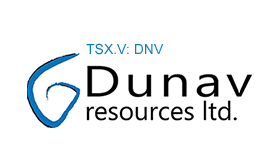Tulare Porphyry Cluster: Kiseljak Au-Cu Diorite Porphyry
Location: Serbia
The Tulare Porphyry Cluster (TPC) project area lies within the Lece Volcanic Complex of southern Serbia. The licence area has been previously mapped by Government agencies and this work also included geochemical and geophysical surveys. The most significant prospect defined was the Kiseljak gold-copper porphyry occurrence, which was drilled predominantly during the 1980s, culminating in a historical resource estimate. In total, 32 vertical diamond drillholes, ranging from 109m to 450m depth, were completed at Kiseljak between 1969 and 1990.
The TPC lies within the Alpine-Balkan-Carpathian-Dinaride (ABCD) orogenic belt that stretches from Austria in the west to Turkey in the east. The ABCD belt is one of the most active mining and exploration areas of Europe.
Mineral deposits are contained within three main belts of Late Cretaceous to Neogene age which include major porphyry copper and massive sulphide deposits. These include the Cretaceous Elatsite, Assarel and Chelopech mines in Bulgaria; the Bor, Majdanpek and Veliki Krivelj mines in Serbia as well as the Skouries and Bucim porphyry copper-gold deposits of Palaeogene age, located in northern Greece and Macedonia respectively. The latter two deposits representing the closest known geological relationship to the Kiseljak deposit.
The Kiseljak gold-copper porphyry is a typical calc-alkaline gold-copper porphyry deposit, forming a north plunging (~70°) pipe intruded into amphibolite and biotite schist country rock. The alteration zones at Kiseljak appear to be restricted in extent, in contrast to well-developed concentric zonations more typical of high level porphyries.
Mineralisation is stockwork-related and disseminated in nature and typical of this style of porphyry. Mineralisation within the potassic zone primarily comprises chalcopyrite veinlets with subordinate bornite (0.1 to 10 mm thick) and disseminated chalcopyrite and bornite. Variable amounts of digenite, chalcocite, covellite, molybdenite (not in economic quantities) and pyrite occur together with rare galena and sphalerite. Magnetite occurs both as disseminations and in quartz veinlets. The propylitic zone generally contains less than 1% disseminated pyrite and rare chalcocite.
Gold mineralisation occurs as native gold associated with gangue minerals. It also occurs as blebs within sulphides, particularly in bornite and chalcocite. Gold correlates strongly with copper.
The Kiseljak Porphyry measures some 800 meters by 300 meters, where it is exposed at surface, and has been traced to a vertical depth of 450 meters to date. Both the porphyry and the surrounding schist have been intruded by a series of intra-mineral porphyry phases, which are generally poorly mineralized.
In November 2012, Dunav reported an initial resource estimate for Kiseljak of 300,500,000 tonnes grading an average of 0.27% copper and 0.26g/t gold in the inferred resource category, for 1.8 billion pounds of copper and 2.5 million ounces of gold, using a 0.25% copper equivalent cut-off grade. The copper and gold prices used in this estimate are $3.60/lb and US$1,500/oz, respectively.
The independent NI 43-101 technical report in support of the Kiseljak mineral resource (the "Technical Report") was prepared by Chris Arnold, MAusIMM (CP), of AMC Consultants (UK) Limited and Deepak Malhotra, P. Eng, PhD (SME), of Resource Development Inc. The Technical Report was filed under Dunav's profile on SEDAR at
www.sedar.com.
Dunav has contracted with G Mining Services Inc. (Montreal) to manage the preliminary economic assessment ("PEA") of the Tulare Copper-Gold Porphyry Project, and metallurgical and environmental studies for the PEA are ongoing.
Initial 'scout' drilling in late 2012, following on encouraging trenching results, has identified a carbonate-base metal gold epithermal vein system at Bakrenjaca, located approximately 3 km south of the Kiseljak deposit. Dunav plans to commence a detailed drill assessment of the Bakrenjaca target area during the first half of 2013 in order to determine the potential mineralized footprint of that epithermal system.
TULARE - KISELJAK INFERRED RESOURCE ESTIMATE
| Million Tonnes |
Cu
Equiv.
(g/t) |
Au
Equiv.
(g/t) |
Cu |
Au |
S (%) |
| % |
Bn lbs |
g/t |
Moz |
| 300.5 |
0.43 |
0.71 |
0.27 |
1.79 |
0.26 |
2.51 |
1.67 |
Notes:
- The effective date of the mineral resource estimate is 22 November 2012
- CIM definitions were used for Mineral Resources
- A cut-off of 0.25% Cu Equivalent is applied for all zones
- Figures have been rounded to the appropriate level of precision for the reporting of an Inferred Resource
- Due to rounding, some columns or rows may not compute exactly as shown
- No Mineral reserves have been estimated for the Kiseljak deposit
- Mineral resources that are not mineral reserves do not have demonstrated economic viability. The estimate of mineral resources may be materially affected by environmental, permitting, legal, title, taxation, sociopolitical, marketing, or other relevant issues.
- The copper price used in this estimate is the mean of monthly average London Metal Exchange copper spot prices for 2010, 2011, and 2012, and is US$3.60/lb. The gold price used in this estimate is the mean of the monthly average spot gold prices for 2010, 2011, and 2012, and is US$1,500/oz.
- The copper and gold equivalent cut-offs, used by Dunav, are based on the in situ grades, using the following formulas with a gold price of US$48.23/gramme and a copper price of US$79.356/percent
Cu_eq = ((Au*48.23)+(Cu*79.356))/79.356
Au_eq = ((Au*48.23)+(Cu*79.356))/48.23

